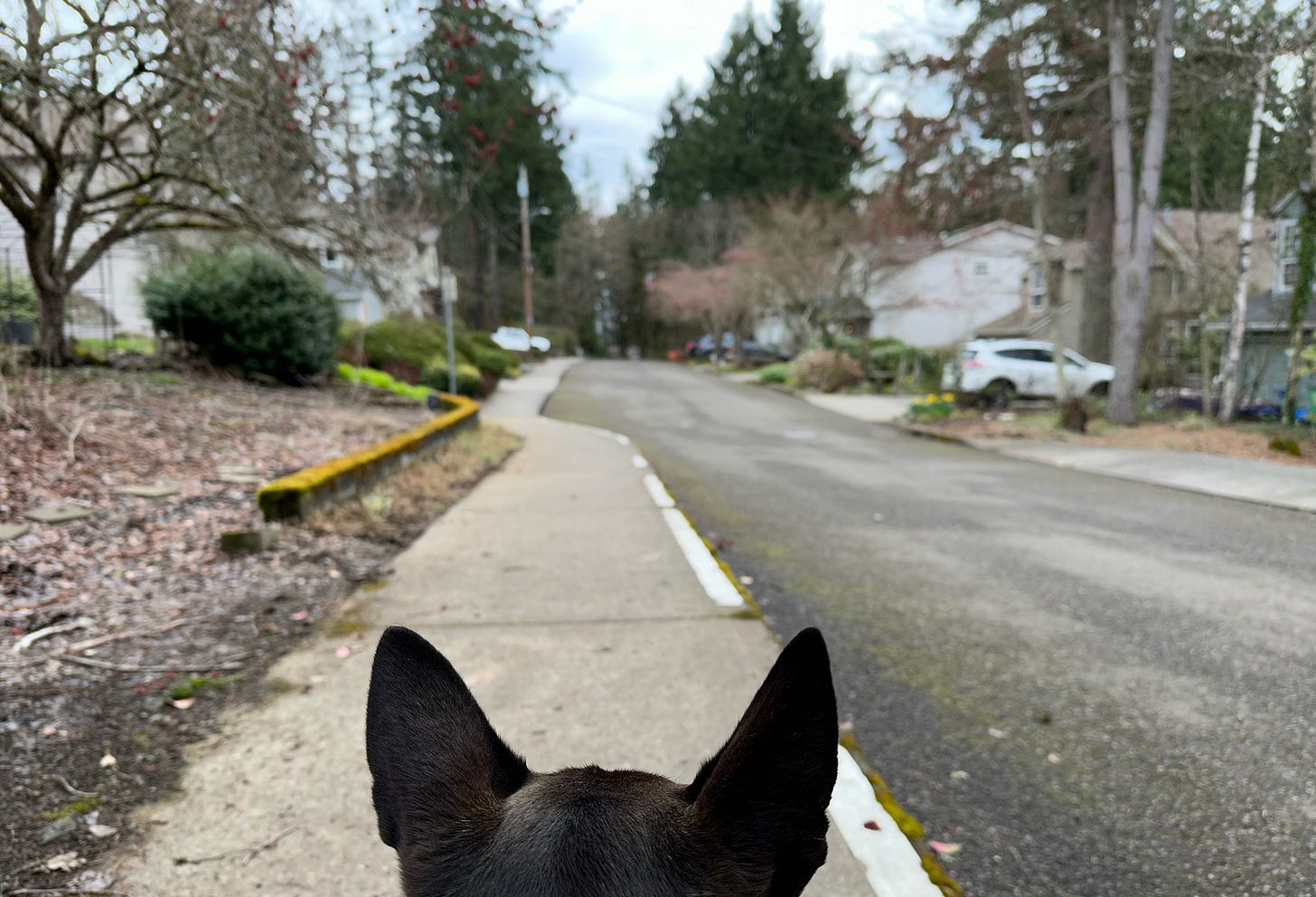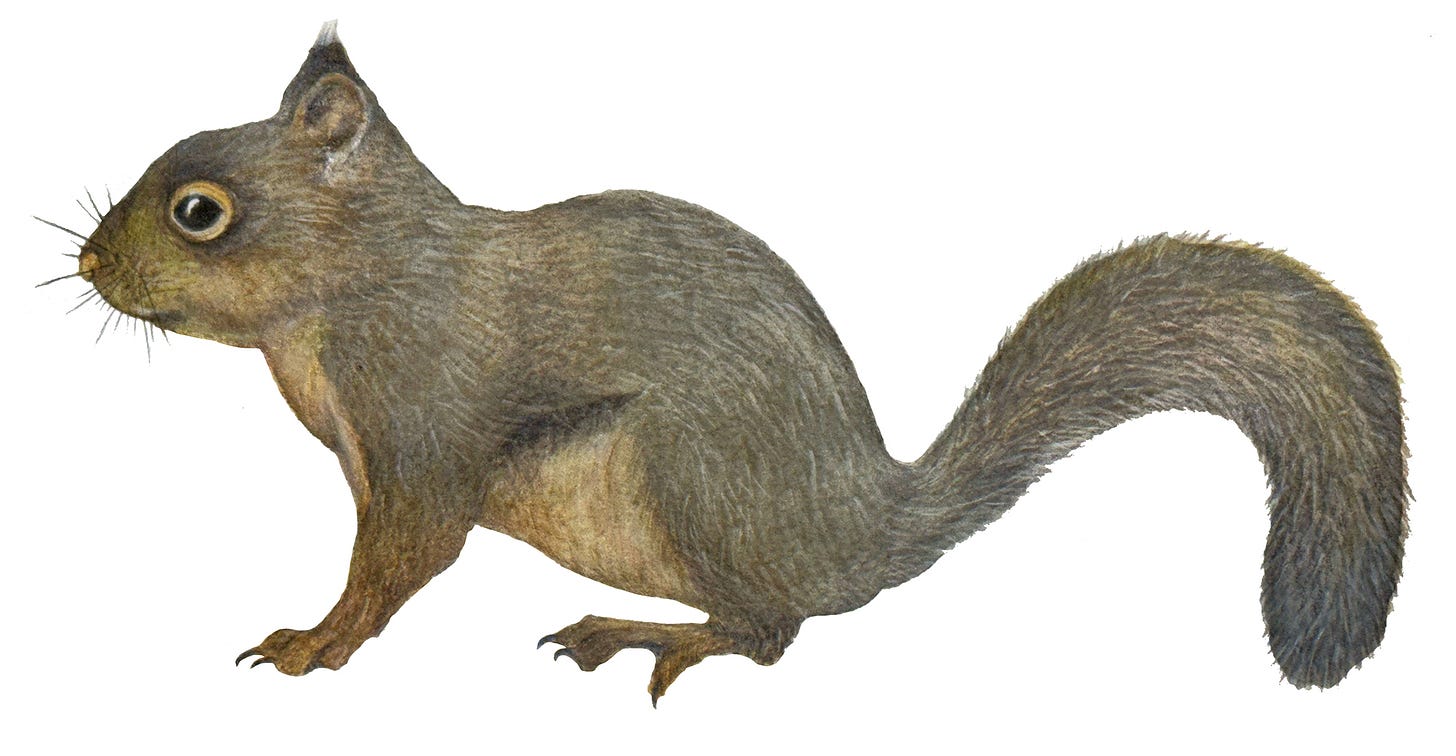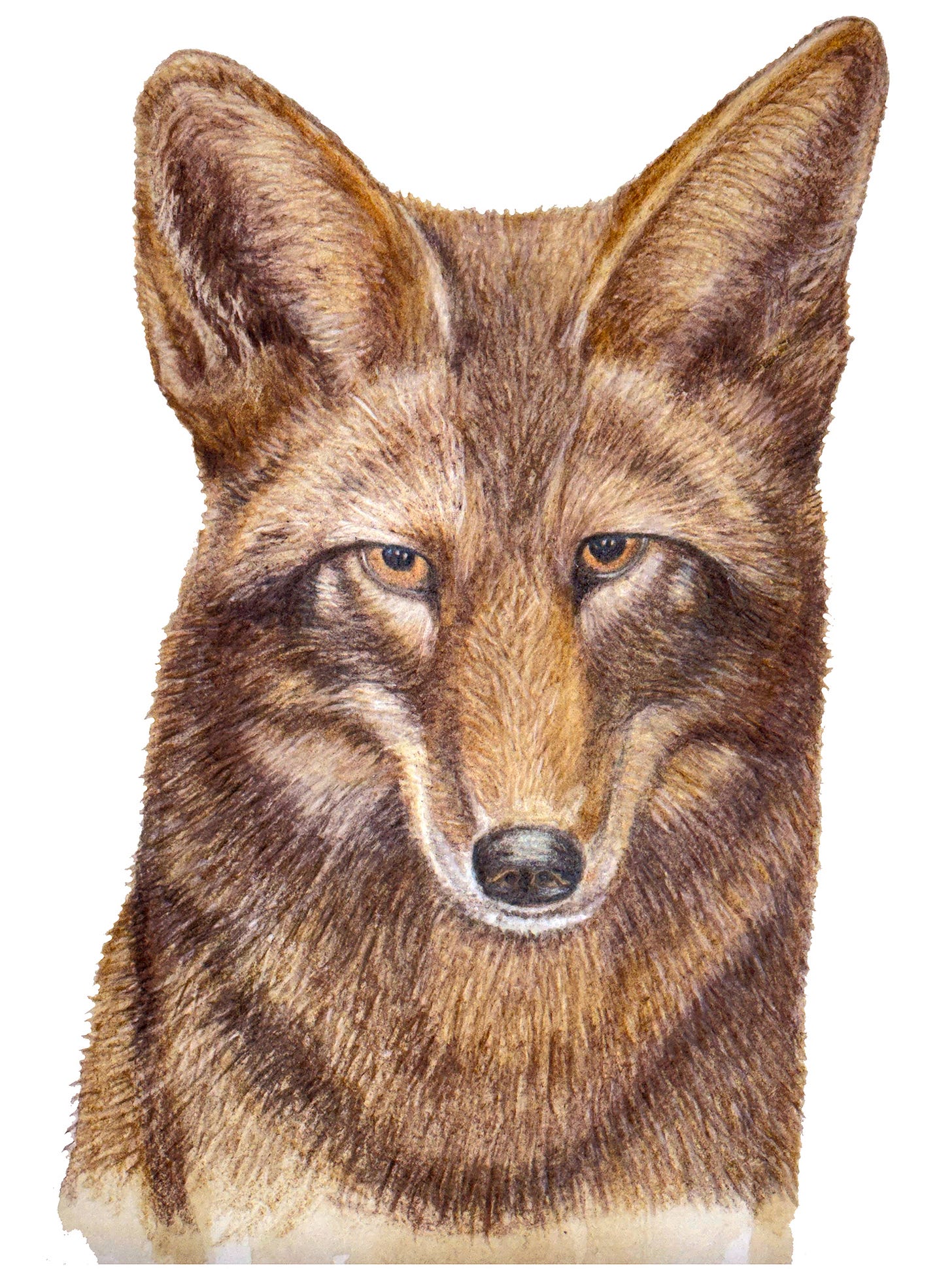A Fierce and Resilient Wild

Aster came to an abrupt stop in the middle of the intersection and glared down the street that dead-ended at the edge of the woods. On most days, we would walk the block to the trailhead, passing a few lovely shade gardens on the right and sunny yards with lawns and borders on the left, and return home through a path in the woods. But that day, she hesitated, her body on alert, and just waited. I looked to see what had her attention and saw a plump squirrel jump off the curb, just beginning to amble across the street. December 9, already late fall and getting into winter in the Willamette Valley, squirrels who had diligently buried their hoard far and wide when food was plenty now hope to reverse the process and recover their cache.
The squirrel suddenly picked up speed. And also on most days, Aster would give chase and drag me along; but that day, she waited some more. That was when I saw the coyote, materializing from the woods’ edge and already running at full speed, a disembodied head of streaking grey and dirty blond radiating from a long muzzle, like a rocket ship in warp speed silently rushing towards the squirrel. The two were on a certain collision course as the little rodent raced for the sunny yard with barberries and mugo pines along the border.
That was when I saw the coyote, materializing from the woods’ edge and already running at full speed, a disembodied head of streaking grey and dirty blond radiating from a long muzzle, like a rocket ship in warp speed silently rushing towards the squirrel.
In the few moments it took for me to recognized this plot, the squirrel had reached the shrubs first, if only by a pine needle’s breadth, and dived beneath the mass of brambles. The coyote faltered while the escape artist, not yet assured of a favorable outcome, swiftly navigated the border, ran across the lawn, scrambled up a tree trunk, and after a few flying leaps from branch to bare branch, disappeared behind the thick feathery curtains of a western red cedar.
Standing on the sidewalk, the coyote shifted her balance from foot to foot–not quite able to come to a full stop from such a gallop–looked a little bewildered at this unfortunate turn of events. Not ready to give up, and perhaps hoping for an encore appearance, the handsome female–I saw that she was the smaller of a pair of coyotes roaming the neighborhood these past few months–alternated between looking up at the tree and casting sidelong glances at us. I wondered if she was maybe a little bit embarrassed or threatened that a descendent of the wolf had just witnessed her failure to secure a meal?

At 39 lbs, Aster is about the size of an average adult coyote but appears much slimmer with her flat, short hairs and no undercoat. When her DNA results came back with a high “wolfiness score,” it was explained that “a higher wolfiness score does not mean your dog has recent wolf ancestry (this would be reflected in the breed results), but does mean your dog has some neat, ancient genetic variants”, meaning that Aster retains some ancient gene variants from wolves that are no longer present in most modern dog breeds due to human interference. In addition, of her maternal Haplogroup–A1b–the genetic testing results said: “This female lineage was very likely one of the original lineages in the wolves that was first domesticated into dogs in Central Asia about 15,000 years ago.”
In North America, coyotes and wolves are estimated to have diverged from a common canid ancestor between 2,000,000 to 50,000 years ago. The resulting wolf is now about two to three times the size of a coyote. They occupy overlapping habitats, but coyotes are much more present in human-built environments. In our suburban Portland neighborhood, I average one or two coyote sightings a month, either singly or in packs of 2-5.
In our suburban Portland neighborhood, I average one or two coyote sightings a month, either singly or in packs of 2-5.
Throughout the Late Pleistocene–between 126,000 to 11,700 years ago–world wolf populations were genetically connected, and dogs are believed to be domesticated from wolves during this same period, maybe as recently as 33,000 to 15,000 years ago. This is to say, likely after the wolf-coyote split. This timeline isn’t controversial, but the where and how domestication happened is not settled. Various recent DNA based studies have placed the origin in Central Asia (2015), Southeast Asia (2015), and Western & Eastern Eurasia (2022). Regardless of the how and where, it does seem that Aster is a much closer relative–a direct descendent–to the wolf compared to coyote’s distant kinship.
Her awesome great-great-great-…-grandmama aside, Aster wisely chose to skirt around this whole awkward spectacle and gave the woods a miss that day; instead, she lead the way home through the neighborhood streets. I praised her for her excellent decision, and thanked her for her keen senses and sharing with me a glimpse of a fierce and resilient wild.



